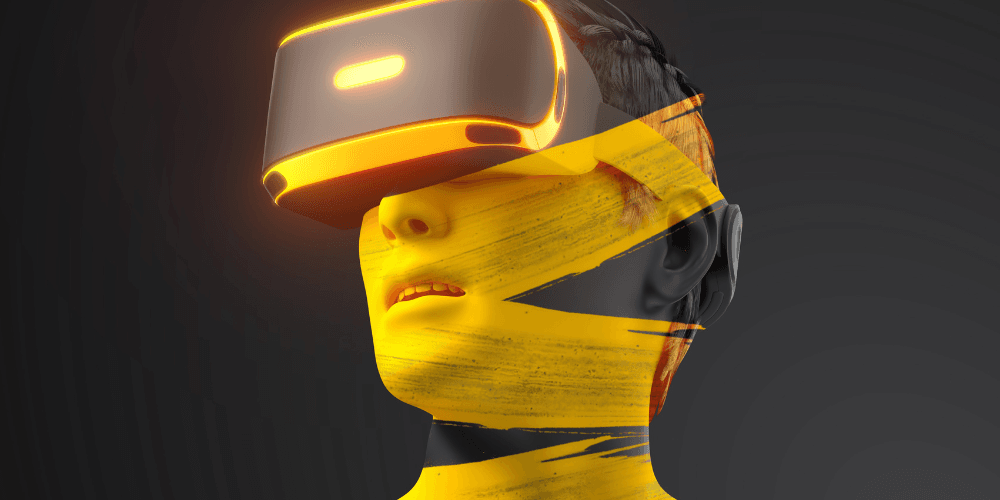Introduction
Virtual Reality (VR) might initially evoke images of immersive gaming experiences, but it\’s a multifaceted technology with a growing footprint across various sectors. Its power lies in transporting users into simulated environments and offering genuine interactions. This blog delves into VR technology, real-world applications, its pros and cons, and how to harness its potential effectively.
What is Virtual Reality?
Let\’s first establish what virtual Reality means. It involves the use of computer technology to fabricate a simulated 3D environment. Users typically wear headsets equipped with visual displays and tracking sensors. As the user moves, the sensors update the visuals within the headset, creating the illusion of being immersed in and seamlessly interacting with the virtual world.
The Benefits of Virtual Reality: Real-World Applications
Healthcare: A Revolutionary Force
- Pain Management: VR offers immersive distractions, helping patients cope with pain during procedures, wound care, or in chronic pain management.
- Rehabilitation: VR simulations provide customized and engaging therapy for physical or cognitive rehabilitation, aiding in stroke recovery or improving motor skills.
- Surgical Training: VR allows surgeons to practice complex procedures in a risk-free, realistic environment, leading to better patient outcomes.
Education: From Theory to Immersion
- History Reimagined: Imagine walking through ancient Rome or witnessing pivotal moments in history, transforming textbook learning into lived experiences.
- Science Exploration: VR can simulate dissections, complex scientific processes, or journeys into the cosmos, enhancing understanding and engagement.
- Skill Training: From flight simulators to hands-on vocational skill practice, VR offers safe and repeatable training environments.
Business: Efficiency and Connectivity
- Collaboration & Remote Work: VR facilitates meetings between teams spread across the globe, simulating real-world offices and enhancing collaboration.
- Product & Design Visualization: Engineers and designers can create 3D models of products or buildings in VR, allowing for early iteration and refinement.
- Customer Experience: Virtual showrooms let clients \”test drive\” cars or experience a hotel room before booking, enhancing decision-making.
Social and Psychological Uses
- Exposure Therapy: VR safely exposes patients to triggers with controlled simulations, aiding the treatment of phobias or PTSD.
- Social Connection: Virtual platforms enable people to connect and socialize regardless of physical location, offering valuable communities.
- Empathy Building: VR experiences that place users in different perspectives or situations can foster understanding and empathy.
Essential Pros and Cons of Virtual Reality
Pros
- Immersive Experiences: VR provides an unparalleled level of immersion unmatched by traditional screens.
- Engagement: VR can increase engagement and retention in learning, training, or therapeutic scenarios.
- Safe Practice: VR provides controlled environments to simulate high-risk situations without real-world consequences.
- Accessibility: VR breaks down geographic barriers and offers virtual travel and otherwise unavailable experiences.
Cons
- Cost: High-quality VR hardware can still be expensive for the average consumer or small businesses.
- Motion Sickness: Some users might experience nausea or disorientation, especially in early VR experiences.
- Technical Limitations: Current VR technology still has limitations in graphics quality and haptic feedback compared to fully-fledged Reality.
- Social Concerns: Potential risks of isolation or the blurring lines between virtual and real experiences need thoughtful consideration.
Tips on Using Virtual Reality Effectively
- Hardware Considerations: Choose a VR setup that matches your needs, balancing affordability, immersion level, and comfort.
- Start Slow: Begin with shorter sessions to acclimatize to VR and avoid motion sickness.
- Environment Setup: Ensure a safe and uncluttered physical space to move around while using VR.
- Application Selection: Explore the wide range of VR apps and experiences across industries, focusing on those relevant to your goals.
- Socialization: Leverage the social aspects of VR where appropriate to connect with others, learn, or collaborate.
How to Make the Most of Virtual Reality in Today\’s World
- Education and Training: If you\’re an educator or trainer, identify areas where VR can make a difference. Whether it\’s historical simulations, scientific labs, or hands-on skill development, consider VR as a tool to revamp your approach.
- Therapy and Rehabilitation: Healthcare professionals can explore VR integration for various applications, from VR-assisted pain management to cognitive or physical therapy programs tailored to individual needs.
- Business and Collaboration: For businesses, VR offers fresh avenues for remote teamwork, product design, and enriching customer interactions. Look for ways VR can improve efficiency, enhance prototyping, or streamline communication.
- Personal Enrichment: Embrace VR for travel, self-improvement, and exploration. From virtual tours of world wonders to guided meditation experiences or VR fitness programs, harness the power of immersion for personal growth.
Conclusion
Virtual Reality is undoubtedly reshaping our interactions with the world around us. While its gaming origins remain strong, VR is expanding into healthcare, education, business, and numerous other sectors. The unique blend of immersion, interactivity, and simulation offered by VR has extraordinary potential to address challenges, open doors, and fundamentally alter how we learn, work, and connect with one another.
As VR technology matures, we can expect further improvements in affordability, hardware capabilities, and the ever-expanding scope of applications. What was once confined to science fiction is increasingly becoming part of our Reality.
Disclaimer
It\’s crucial to remember that VR is a powerful tool, and responsible use is paramount. Take breaks, be mindful of your surroundings, and consult a healthcare provider if you experience any persistent discomfort. As with any emerging technology, it\’s essential to stay informed about potential risks and engage in discussion about responsible and ethical applications of VR.
Please note that this blog post offers an overview and should not be taken as expert advice on any specific aspect of VR use in professional sectors. Before implementing VR into critical applications, consult with relevant industry professionals, such as healthcare providers, educators, and business advisors.


